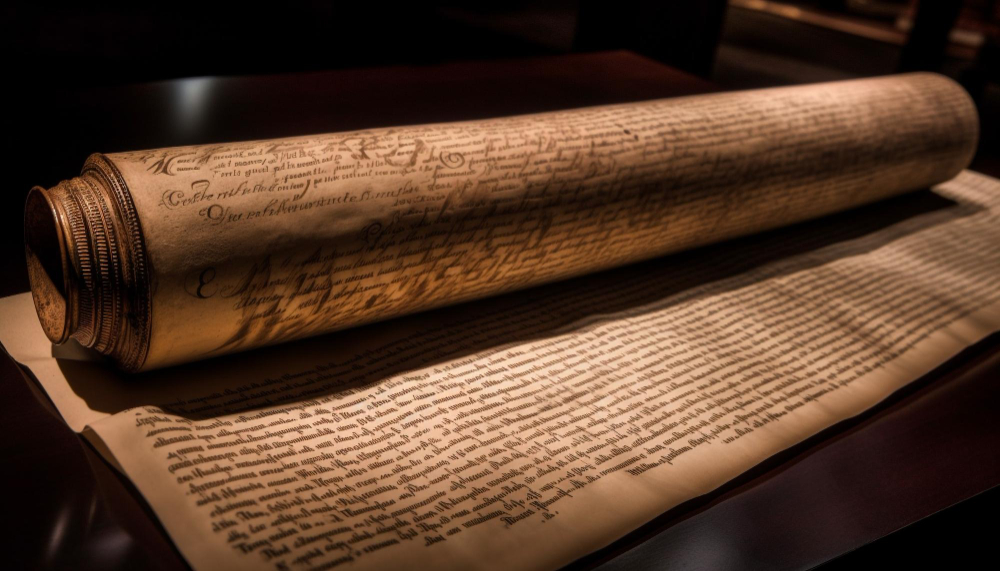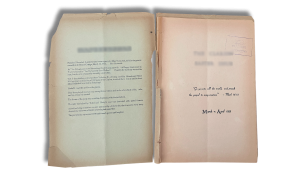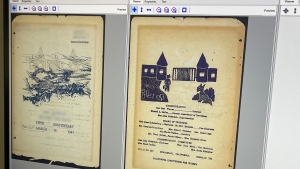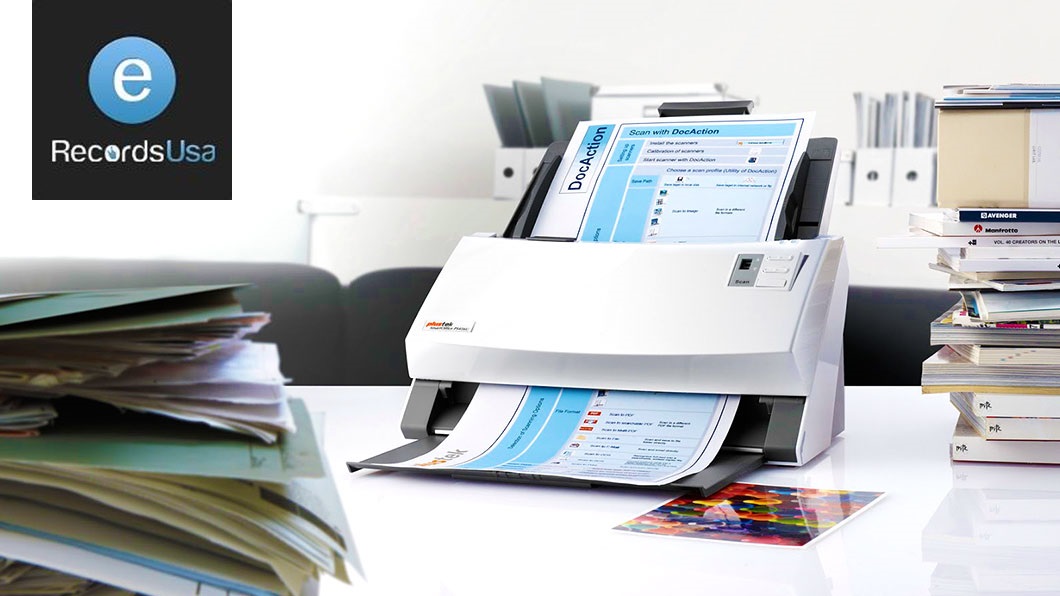For museums and historical societies, preserving the invaluable stories and records entrusted to them is paramount. These historical documents, artifacts, and objects are tangible links to the past, offering invaluable insights into our history, culture, and society. However, the physical nature of these materials makes them susceptible to various threats, including deterioration, damage, and loss. This is where archival material digitization comes in.
Several professional document scanning providers assist organizations in digitizing their museum and historical records, ensuring the long-term preservation and accessibility of these invaluable materials. Historical document scanning is a highly specialized process carried out by professionals to help organizations convert aging archives of fragile paper documents and microfiche film into text-searchable digital archives. By utilizing such scanning services, you can preserve digital copies of documents for future generations, ensuring the information they contain remains accessible for research, education, and public interest.
This guide explores the importance of historical document scanning, the process, the technologies involved, and the challenges faced during digitization.
Why is It Important to Preserve Historical Documents?
Embarking on a museum-grade digitization project for your historical collections unlocks numerous advantages, not only for preserving the past but also for enriching public engagement and scholarly endeavors. Here are some of the most compelling benefits of scanning historical documents:
1. Increase Accessibility and Availability
By converting historical materials into digital formats, museums, and historical societies can transcend the limitations of physical access.
Digital archives eliminate geographical barriers, allowing researchers, students, and the general public to conveniently access and explore collections from anywhere in the world, at any time.
This broadened accessibility fosters a deeper connection to history and democratizes access to knowledge, empowering individuals to engage with primary sources and delve into the past on their own terms.
2. Enhance Preservation and Longevity
Historical documents are inherently vulnerable to the ravages of time, susceptible to degradation from factors like light, humidity, and improper handling.
Digitization offers a powerful solution, safeguarding the original materials by minimizing the need for physical access and handling. Additionally, digital files can be easily copied and backed up, creating a resilient safeguard against potential loss or damage to the originals.
This ensures the long-term preservation of essential historical records for future generations, ensuring their continued availability for research and exploration.
3. Improve Research and Analysis
Digital archives empower researchers and scholars with powerful tools to analyze and explore historical materials in entirely new ways.
Advanced search functionalities within digital collections enable users to quickly locate specific keywords, phrases, or even handwriting styles across vast datasets. This expedites research efforts and opens doors to new avenues of historical inquiry.
Furthermore, digital tools can facilitate deeper analysis by enabling researchers to manipulate and compare digitized materials in innovative ways, fostering a more comprehensive understanding of the past.
4. Unlock New Engagement Opportunities
Digital collections offer exciting possibilities for museums and historical societies to connect with audiences in innovative ways.
Online exhibits can be curated using high-resolution scans, allowing visitors to engage with historical materials in an interactive and immersive manner.
Additionally, digitized materials can be integrated into educational resources, fostering deeper learning and a more engaging experience for students.
5. Foster Collaborative Research and Knowledge Sharing
Digital archives facilitate collaboration and knowledge sharing among researchers and institutions across geographical boundaries.
Online platforms and repositories can facilitate the sharing of digitized materials between museums and historical societies, fostering the exchange of knowledge globally.
This collaborative approach enriches understanding and fosters new perspectives on historical events and cultural developments.
6. Enhance Security and Access Control
Digital archives can offer improved security compared to physical storage. Access control measures can be implemented to ensure that only authorized individuals can access sensitive materials.
Additionally, digital backups can be stored in secure offsite locations, further safeguarding valuable historical records from potential threats.
7. Cost-Effectiveness in the Long Run
While the upfront cost of digitization can be significant, it can be a cost-effective solution in the long run.
Reduced reliance on physical storage space, conservation efforts, and photocopying expenses can lead to significant cost savings over time.
Additionally, digitized materials can be used for various revenue-generating initiatives, such as licensing for educational purposes or creating online merchandise.
By understanding the importance and benefits of historical document scanning, museums and historical societies can make informed decisions to preserve their precious collections.
How Does Historical Documents & Archive Scanning Help in Long-term Preservation?
Historical and museum documents—irreplaceable testaments to our past, culture, and heritage—hold immense value. Safeguarding these precious resources for future generations is paramount. Thankfully, museum-grade digitization presents itself as a powerful tool for ensuring their long-term preservation and accessibility.
Enhance Preservation: Unlike physical documents susceptible to degradation, digital images remain unaltered and accessible for countless viewings without data loss. Moreover, digitization minimizes the need for physical handling, thus preserving the originals from wear and tear.
Expand Accessibility: Physical documents are geographically limited, restricting access. Through digitization, researchers, students, and the public can conveniently explore these invaluable resources from anywhere, at any time, fostering broader engagement with history.
Streamline Dissemination: Digital copies can be readily shared and distributed, facilitating collaboration among institutions and researchers. This global exchange of knowledge enriches historical understanding and fosters a more connected scholarly community.
Disaster Preparedness: Digital archives serve as a crucial safeguard against unforeseen events such as natural disasters or emergencies. By creating digital copies, we ensure the survival of vital historical information, even in the face of unforeseen circumstances.
Scanning Technologies Used in Historical Document Preservation
Selecting the appropriate scanning technology is crucial for ensuring the quality and longevity of your digitized historical materials. Different scanners cater to diverse document types, sizes, and fragility, demanding a thoughtful selection process.
Here’s an overview of some commonly employed scanning technologies for historical document preservation:
1. Flatbed Scanners
These versatile scanners are ideal for documents of varying sizes, including bound books, photographs, and loose papers. They utilize a contact-based approach, where the document rests directly on a glass platen.
While convenient and affordable, flatbed scanners may not be suitable for delicate or fragile materials due to the risk of potential damage.
2. Planetary Scanners
Planetary scanners employ a non-contact imaging method, capturing high-quality digital images of bound materials without the need for physical contact.
This makes them particularly suitable for precious and fragile documents, such as rare books, manuscripts, and artwork.
However, planetary scanners often require specialized training and can be more expensive than flatbed scanners.
3. Overhead Scanners
These scanners capture images from above, often used for large, unbound documents like maps, blueprints, and posters.
They offer a non-contact approach, similar to planetary scanners, and can be a cost-effective option for bulk digitization projects involving large-format materials.
4. Microfilm Scanners
While microfilm technology is not actively used for new digitization projects, institutions with existing microfilm collections can utilize microfilm scanners to convert these analog records into digital formats.
This allows for improved accessibility and preservation of historical materials stored on microfilm.
5. Book Scanners
Specifically designed for digitizing bound materials like books and magazines, book scanners offer a unique advantage.
They utilize a V-shaped cradle that gently holds the book open, minimizing the risk of damage while capturing high-resolution images of both pages simultaneously.
This technology is ideal for large-scale book digitization projects while ensuring the integrity of valuable historical collections.
Optical Character Recognition (OCR) and Text Recognition Technologies
In addition to capturing high-quality images, integrating OCR technology into the scanning process empowers further functionalities.
OCR software analyzes scanned documents and converts the embedded text into editable and searchable digital text files.
This unlocks numerous benefits, including:
- Enhance searchability: Searchable text enables researchers and the public to easily locate specific information within digitized documents using keywords or phrases.
- Improve accessibility: Textual content allows for screen readers and other assistive technologies to access the information, fostering inclusivity for individuals with visual impairments.
- Facilitate research and analysis: Extracted text can be integrated into other digital platforms or databases, enabling more efficient research and analysis of historical materials.
Factors Influencing Selection of Scanning Technology for Historical Material Preservation
Several factors influence the selection of the most suitable scanning technology for your specific needs. These include:
- Document type and size: Consider the physical characteristics of your collection, such as bound books, loose sheets, or oversized documents.
- Condition and fragility: For delicate or fragile materials, non-contact scanning options like planetary scanners are crucial.
- Budgetary constraints: Flatbed scanners offer a cost-effective solution for basic digitization needs, while specialized scanners like planetary scanners may require a higher investment.
- Desired image quality: High-resolution scans are essential for certain research applications, requiring scanners capable of capturing intricate details.
Consulting with a professional digitization service provider like eRecordsUSA can help you make informed decisions regarding the most appropriate scanning technology for your unique historical collection.
We possess extensive expertise in selecting and utilizing the latest advancements in museum-grade digitization, ensuring the highest quality and preservation standards for your invaluable historical materials.
File Formats and Storage Options
The successful long-term preservation of your digitized historical materials extends beyond the selection of appropriate scanning technology. Choosing the right file format and implementing secure storage solutions are equally crucial aspects of ensuring the accessibility and integrity of your digital collections.
Appropriate File Formats
Selecting the optimal file format for your digitized documents requires careful consideration of various factors. Here are some commonly used formats and their key characteristics:
- TIFF (Tagged Image File Format): TIFF offers a lossless format, preserving every detail of the original image without any compression. This makes it ideal for high-resolution scans and archival purposes. However, TIFF files can be larger in size compared to other formats.
- JPEG (Joint Photographic Experts Group): JPEG utilizes a lossy compression technique, reducing file size by discarding some image data. While suitable for photographs and certain document types, the loss of data can be detrimental for preserving intricate details, making it less suitable for archival purposes.
- PDF (Portable Document Format): PDF offers a versatile format that can combine both image and text elements, preserving the layout and formatting of the original document. Additionally, PDFs can be password-protected and support various features like searchability. However, standard PDFs may not be ideal for long-term preservation due to potential compatibility issues in the future.
Storage Considerations
The choice of storage solution for your digitized collections depends on factors like budget, security needs, and accessibility requirements. Here are some common options:
- Cloud Storage: Cloud storage services offer readily accessible and scalable storage solutions, enabling remote access and collaboration. However, relying solely on cloud storage can present potential security concerns and ongoing subscription costs.
- Local Servers: On-site servers provide greater control over data security and access. However, they require significant upfront investment in hardware and expertise for maintenance and backup strategies.
- Archival Storage: Specialized archival storage facilities offer optimal environmental conditions and dedicated security measures to ensure the long-term preservation of digital materials. While often the most secure option, these services typically come at a higher cost.
Digital Archiving and Preservation Standards
Safeguarding the long-term usability and accessibility of digital archives hinges on adherence to well-established archiving and preservation standards. These comprehensive guidelines encompass crucial aspects like metadata, file formats, storage, and quality control – all vital for ensuring the continued longevity and integrity of digital collections.
Several renowned standards govern this crucial practice, including:
- PREMIS (Preservation Metadata Implementation Strategies): This framework provides a standardized approach to capturing and managing essential metadata associated with digital objects, ensuring their long-term understandability and preservation.
- OAIS (Open Archival Information System) reference model: This model outlines a functional framework for designing and operating long-term digital repositories, encompassing data ingest, access, storage, and preservation planning.
- FADGI (Federal Agencies Digital Guidelines Initiative): Established by the US National Archives and Records Administration, FADGI offers specific guidelines for federal agencies to manage and preserve their digital records effectively.
Observing these established standards can ensure that museums, historical societies, and other institutions’ digital collections will remain valuable and accessible for generations to come.
How does eRecordsUSA Help With the Digitization of Museum Collections?
Our team comprises a dedicated group of professionals with extensive experience in museum-grade digitization. We possess a deep understanding of the unique challenges and considerations associated with handling and preserving valuable historical materials. This expertise extends to a comprehensive knowledge of diverse scanning technologies, ensuring we select the most suitable approach for each document type within your collection.
eRecordsUSA goes beyond simply capturing digital images of your historical materials. We offer a full suite of services designed to streamline the digitization process and ensure the long-term accessibility and preservation of your collections. Our comprehensive service offerings include:
- High-Quality Scanning: Utilizing state-of-the-art equipment and adhering to the highest quality standards, we capture digital images that faithfully represent your original documents in exceptional detail.
- Meticulous Metadata Creation: We understand the crucial role of metadata in facilitating the discoverability and usability of your digital collections.
- Secure Long-Term Archiving: We offer secure and reliable storage solutions to safeguard your digitized materials.
Contact Us Today for a Free Consultation
We understand that every historical collection presents unique characteristics and requirements. Our team is committed to providing personalized consultations to discuss your specific needs and objectives.
Contact eRecordsUSA today to schedule a free consultation and embark on a successful digitization journey, ensuring the enduring legacy of your invaluable historical treasures. Partnering with us means gaining access to a wealth of expertise, comprehensive services, and a strong commitment to preserving the past for future generations.
Let us help you with historical and museum collections and share them with the world.
eRecordsUSA also specializes in providing Document Scanning, Would you like to receive a free quote for Historical Documents Digitization Services & Historical Documents Digitizing Services? Call (510) 900-8800 or email us at [email protected].
















